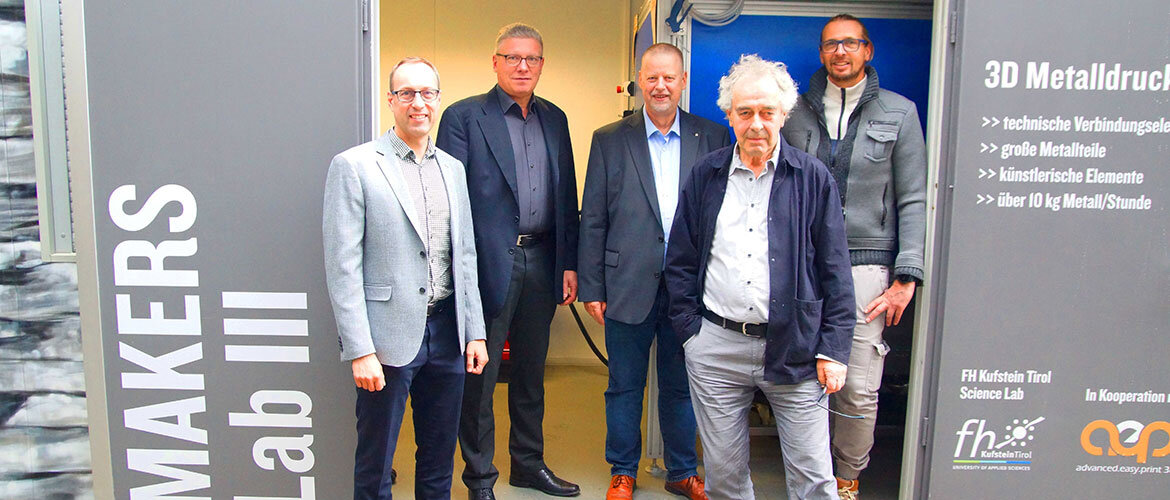
University of Applied Sciences Kufstein Inaugurates Metal 3D Printer in Makers Lab III
On Tuesday, October 24, 2023, the University of Applied Sciences Kufstein Tirol inaugurated its WAAM (Wire and Arc Additive Manufacturing) metal 3D printer. Project Manager Prof. (FH) Dr.-Ing. Christian Schmid presented the many possible applications of the WAAM printer to the invited guests. The machine is on permanent loan from AdvancedEasyPrint3D, a corporate partner headquartered in Burgdorf near Hanover, and is the first of its kind in the country to be located at a university.
AdvancedEasyPrint3D developed and manufactured the WAAM printer in close cooperation with Christian Schmid before he was appointed to his current position at the university. A guest lecture by Prof. Mischa Schaub on the topic of design, AI, and additive manufacturing provided detailed insights into the subject area. The event was rounded off by an informal get-together giving attendees an opportunity for professional exchange. The machine is housed in a specially equipped container in Makers Lab III. Using a product sample, the surface texture of a typical metal print was reproduced and transferred to the outside of the container by a spray painter, giving it a distinct metallic look.
Metal 3D printing in teaching and research
Metal 3D printing offers completely new and significantly expanded possibilities in the production of metal components. While many other educational institutions have geared their research towards small components, the University of Applied Sciences Kufstein Tirol focuses primarily on large-format components for the fields of metal engineering and mechanical engineering, where there are high strength requirements. In collaboration with local Tyrolean companies, faculty and students are already working on such problems in order to give the local economy a competitive edge. “Our new metal 3D printer will be used to conduct research on optimized hybrid 3D printing processes and applications combining various materials and components,” says Prof. (FH) Dr.-Ing. Christian Schmid. “Equally important is the metal 3D printer’s integration into our teaching, where it is used in lectures, practical projects, as well as bachelor’s and master’s theses.”
Additive manufacturing is integral to contemporary product development
Additive manufacturing, commonly known as 3D printing, is a technology that is becoming increasingly important in modern product development and the manufacturing of components. The strongest growth in this sector is currently in the 3D printing of metals. One of the cutting-edge technologies in this regard is the aforementioned WAAM process, which in turn is based on deposition welding using arc technology. WAAM-printed components exhibit exceptional material properties, while the process can be used on a wide range of metals and is characterized by high productivity. As welding wires from the widely used joint welding technology are used, many materials are tried and tested and can be employed in the production of 3D-printed parts. In addition to pure 3D printing, the machine is capable of smoothing the rather rough surfaces resulting from the printing process using an integrated milling system. The WAAM 3D printer further integrates an intermediate thermomechanical process using a patent-protected, additional processing step which leads to increased strength values after each printed layer.
On top of these purely technical applications, the WAAM process also opens up new possibilities in the field of design. For example, it allows metal design elements to be printed directly onto components or can be used in the creation of purely artistic objects.
Links:
- Bachelor’s degree program in Industrial Engineering & Management
- Master’s degree program in Smart Products & Solutions